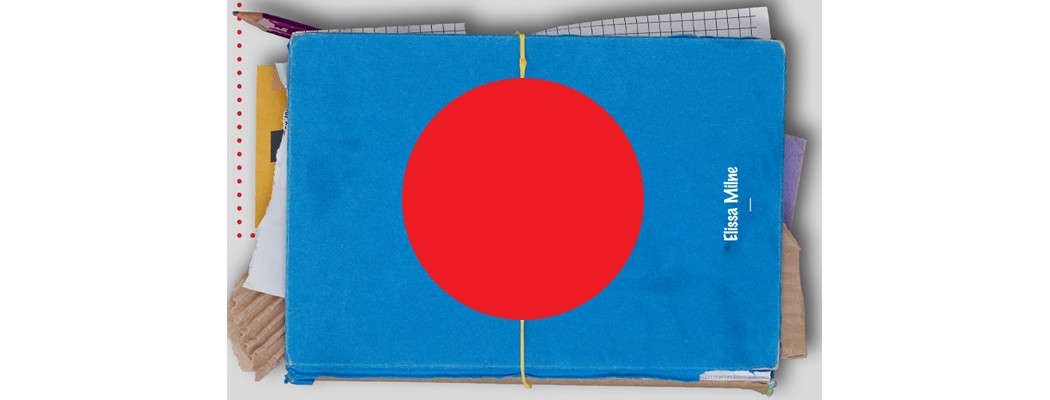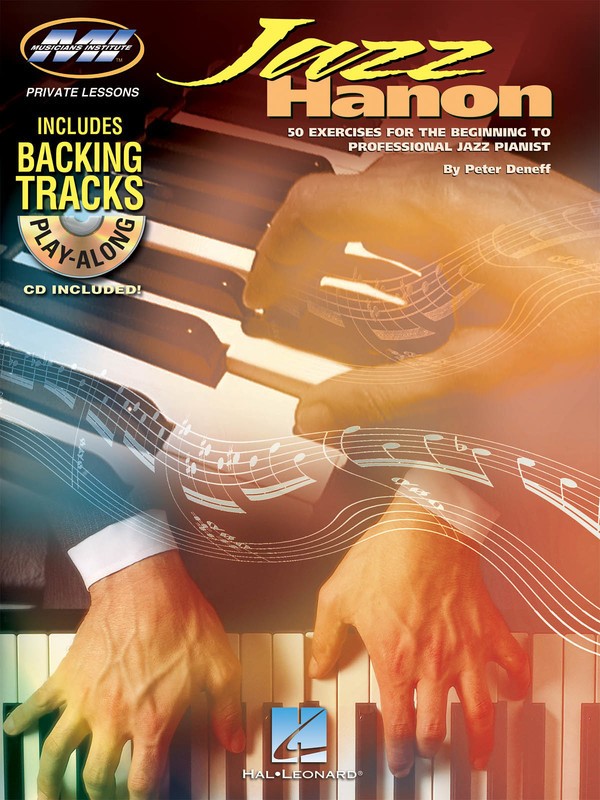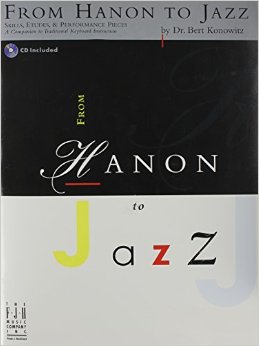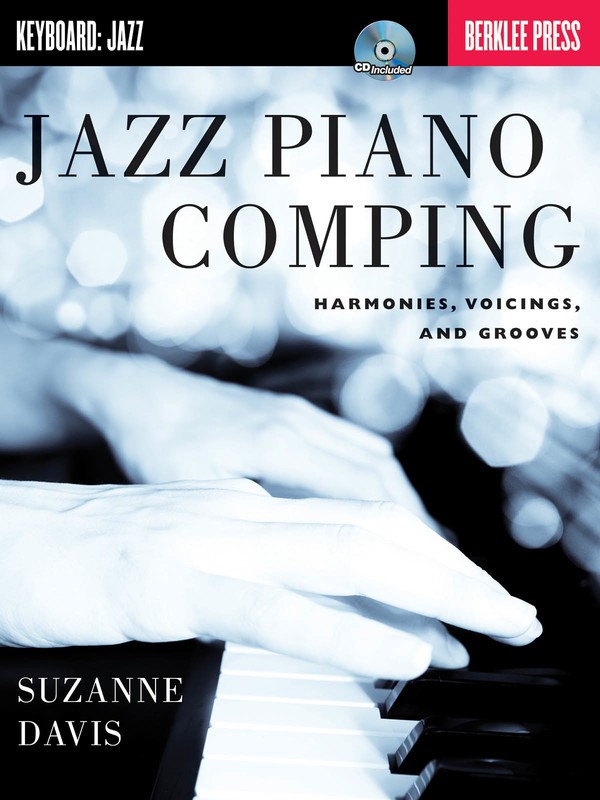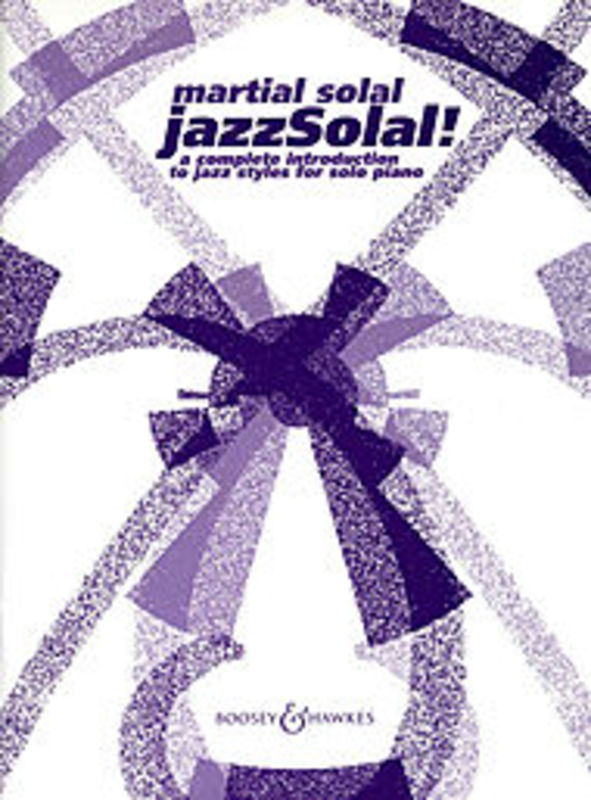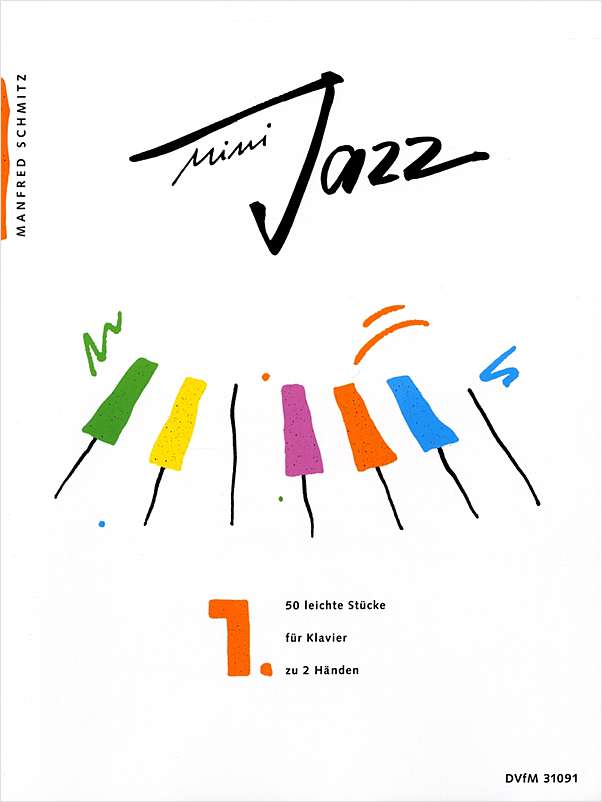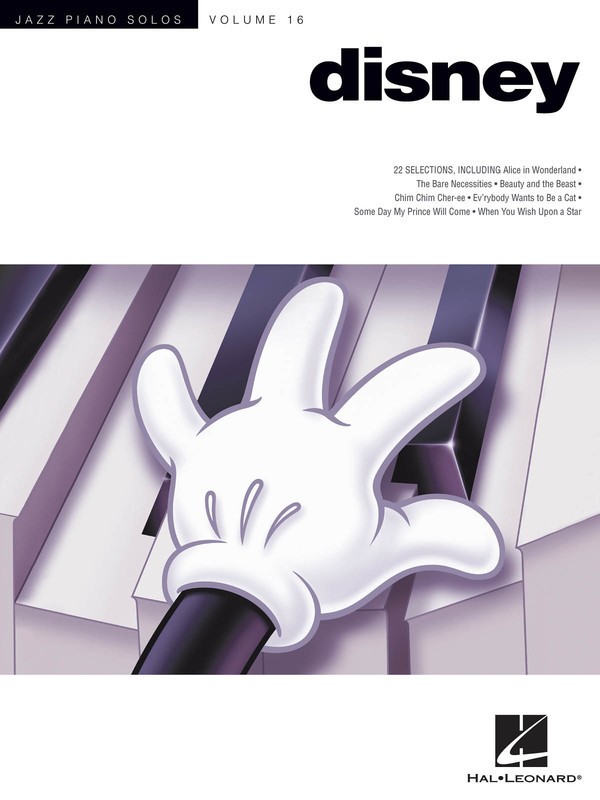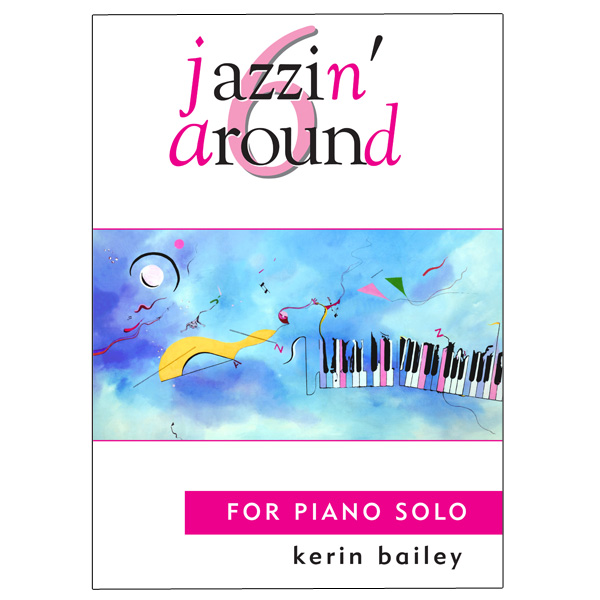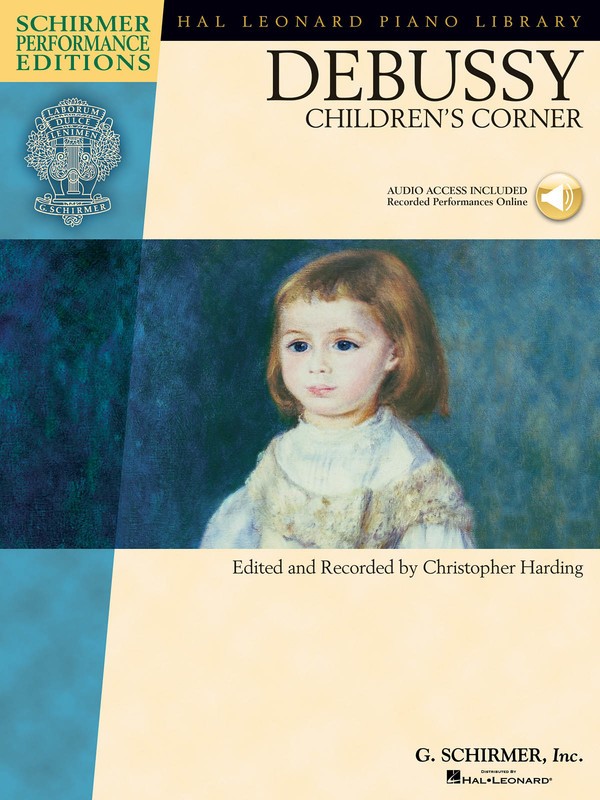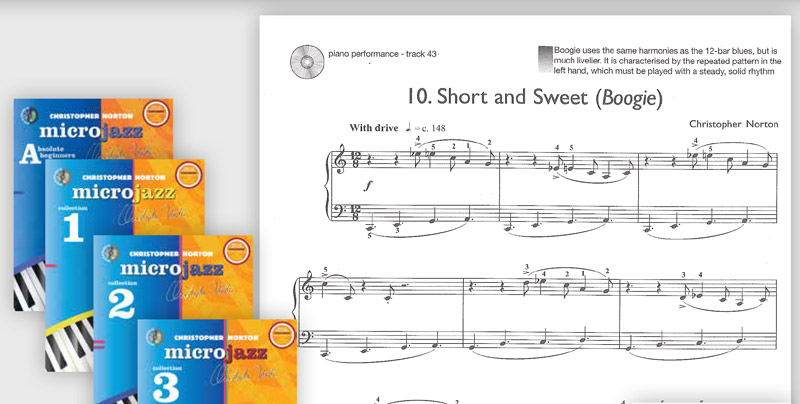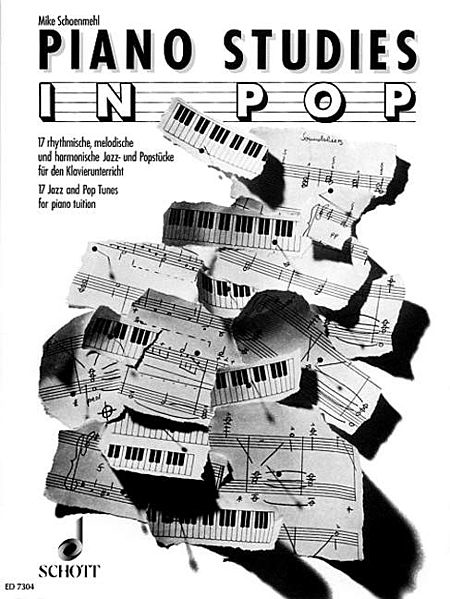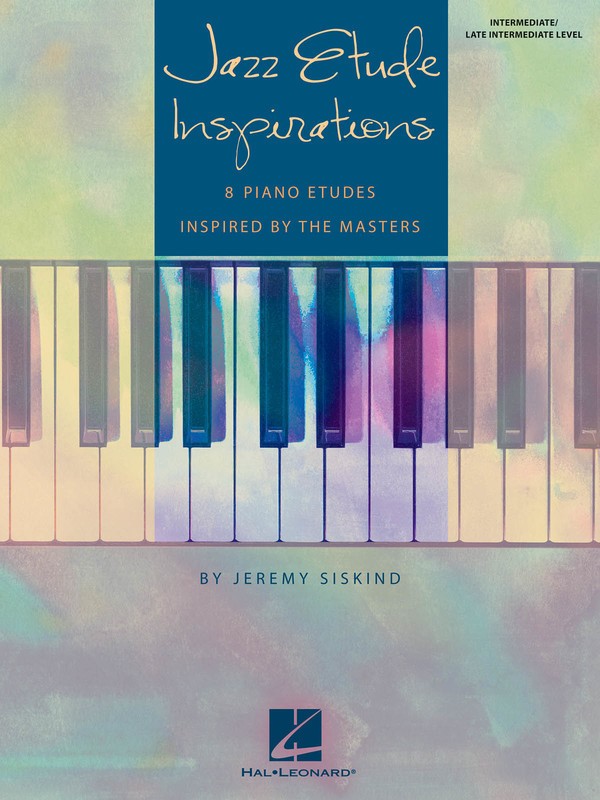Jazz Hanon by Peter Deneff
696478
This book is kind of ugly, and kind of unbalanced (all the exercises have busy right hand, static left hand), and the reference to Hanon is a loose association at best, but if and once you can get past these objections there’s a lot to like about this volume.
Jazz harmonies are turned into Hanon-style arpeggiated figures and repeated in every one of the twelve chromatic positions over a 2 octave stretch, first ascending then descending. It’s the kind of practice you want to assign simply by saying “now play it in every key” but you know your students will do two or three transpositions and then give up. With a written out ‘assignment’ you have the work literally spelled out for your students. And the chords are cool.
I would suggest getting students to practice the right hand part in both hands, and then the left hand part in both hands, as well as working through each exercise as written. There are backing tracks, too, so working through an exercise suddenly seems like a reward.
From Hanon to Jazz by Dr Bert Konowitz
FJH1348
Hanon clearly has such a hold on the piano teaching community that his name is cheerfully invoked with regularity! And here’s another jazz-Hanon blend, but with some nice differences.
The book is divided into Part 1: Jazz Hands, Part 2: Jazz Eyes, and Part 3: Basic Jazz Repertoire – The Standards. This way of approaching jazz skills is absolutely inspired, particularly when it comes to students who suddenly age 13 or 14 announce they want to ‘learn to play jazz’; the first section gets their hands doing the kinds of things jazz pianists do, and it’s only once this is becoming solid that we move to reading from lead sheets.
It’s all kept comparatively basic (note: I said ‘comparatively’!), and by the final page students will be able to learn jazz standards from a fake book and actually know (more or less) what they are doing.
Jazz Piano Comping by Suzanne Davis
50449614
This is a book dedicated to teaching you how to play jazz from a chord chart, but it does expect you know how to read a chord chart with some degree of fluency first. All the basics of chord chart notation are covered, but more as a reference than as a series of exercises. In other words, this is a perfect book to follow on after Chord Play, by which stage students will feel sufficiently confident to delve into the more complex world of jazz piano comping.
To master the art of comping pianists need to practice chord progressions and voicings, and this book lays out these exercises in a clear but concise method. Even better, there are plenty of exercises with backing tracks and lots of recorded examples of the music on the page, so students can use this book for listening-learning as well as playing-learning.
Finally, there are a number of chapters looking at specific strategies for comping in a range of performance contexts (with bass and drums, with a guitarist, comping your own solo) and solid suggestions for building skills toward performances. Great for students who really do want jazz piano skills.
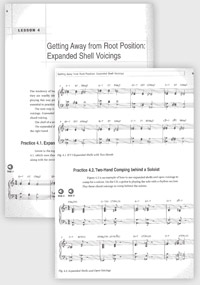
Jazz Exercises, Etudes, Minuets and Pieces by Oscar Peterson
311225
One of the giants of 20th century jazz piano dedicated himself to creating classical-style jazz studies that could be used by piano teacher to introduce the style of jazz to their students. These exercises are fully notated and have no improvised element to them whatsoever. You may even find the writing slightly conservative at times! Examination boards the world have recently embraced these exercises, and many a Grade 5 or 6 student will have learned at least one of these gems over the past five years.
This book probably also qualifies for the next section of the resource file (Fake Jazz: written out improvisations) because much of the purpose of these studies is to introduce the vernacular of jazz piano improvising: the fluent use of scale and pattern to build witty melodic lines, for instance. As much as these books build technique and musical intelligence, audiences will appreciate these pieces performed with panache!
Jazz-Solal
48012056
A classic collection that every piano teacher should own and use! These pieces are sometimes resolutely within the jazz idiom, to the point where they don’t have that easy pop appeal that we often associated with the term ‘jazz’ in piano pedagogical writing. There’s loads of dissonance, and the use of syncopation goes far beyond just making the music sound ‘cool’.
If you were teaching and entering students for AMEB exams in the 90s you may well remember these pieces featuring heavily in the syllabus (alas, they’ve now been removed), particularly at the more advanced end of the collection. The easy pieces are tiny, easily mastered in a week by students in the earlier grades, and covering a range of syncopations and articulations that are characteristic of jazz. But my favourites are #51: Essai en 12/8 and #52: Berceuse; energetic, fluent writing in a jazz idiom that your students will love.
Mini Jazz by Manfred Schmitz
DVfM 31091
This 50 piece collection is in very much the same spirit as Jazz-Solal – little pieces of jazz designed to introduce syncopations and melodic jazz-inflections to piano students still in the early stages of learning. Hello, Minster MINI, the first piece in the collection, is featured in the P Plate Piano series, for example, and Old Movie Man (number 34) is in Getting to Grade One. The final pieces are reaching a Grade 3 standard.
Schmitz introduces a range of jazz gestures in pieces small enough to not be overwhelming. And, with each piece being perfectly interesting, and (if a student hasn’t played much music with syncopation before) perfectly challenging in its own way, more advanced students (Grade 4 – 8) will gain much from learning these pieces, too.
Hal Leonard Jazz Piano Solos Series
With 28 volumes in the series, and counting, I’m happy to recommend them all, even though I’m highlighting only two titles below: Brent Edstrom’s arrangements are intelligent, witty and pianistic, and I’m confident that you’ll find plenty to love in any one of his collections. But here are my two current favourites…
Jazz Piano Solos Volume 16: Disney
312121
Jazz Piano Solos: Disney page 26 (Can You Feel The Love Tonight) clear enough so a curious teacher could play it through a little.
22 songs from Walt Disney movies, both classic and (kind of) contemporary, from When You Wish Upon A Star, Some Day My Prince Will Come and Zip-aDee-Doo-Dah through to Beauty and the Beast, Can You Feel The Love Tonight and You’ve Got a Friend In Me, all given a jazz treatment.
What you get is a fairly straight forward jazz version of the tune followed by a fully written-out ‘improvisation’ that will make any of your students sound like a jazz professional. Seriously! Chim Chim Cher-ee is probably my absolute favourite from this collection, and it really is a revelation – chords you would never have expected and really complex rhythmic variations and developments.
Don’t be fooled by the relatively big stave size: your Grade 7 and 8 students will love (but be challenged by) these arrangements! Grade 6 students will need to work fairly hard to be able to perform them at the appropriate standard, so assign these with some degree of care in order to avoid disenchantment.
Jazz Piano Solos Volume 21: New Orleans
312169
New Orleans: where it all began. In complete contrast to the Disney volume, this collection features tunes whose origins are in jazz itself: Basin Street Blues (Teddy Wilson and Fats Waller), Kansas City Stomp (Jelly Roll Morton), for instance; or tunes like Iko Iko which emerged from the New Orleans music scene.
Your students may not know these tunes as well as they know the Disney numbers, but this collection is classic jazz material, and fun to boot. With all the same attributes and qualities as the Disney book (jazz-style arrangements followed by written out improvisations) you’ll find this becomes a favourite resource for years to come.
Kerin Bailey’s Jazzin Around series
I’m including Kerin Bailey’s compositions in this ‘fake jazz’ section for two reasons: firstly, many of his pieces really do have that feel of live improvisation about them that makes them sound like you’re the jazz musician who just made it up on the spot; secondly, Kerin Bailey frequently includes chord charts with his pieces, so if you do want to get jamming with your friends you have a lead sheet right there in your piano book, ready to go.
In other words, the sheet music can very easily be used to really make ‘jazz’ even though you can create a stand-alone performance without needing to improvise at all. And of course, having the chord symbols there in the music supports chord chart reading (an essential jazz piano skill). And from rags to jazz waltzes to stomps and du-wups, Kerin Bailey’s pieces are an introduction to all kinds of jazz styles and idioms.
And the kids love them. Melinda’s Mini March. Enough said.

REALLY FAKE JAZZ (pieces that use the grooves, harmonies and structures of jazz)
What I’m calling ‘really fake jazz’ are those compositions that use the shapes of jazz, its structures, genres and grooves, syncopations and anticipations, non-diatonic modes, saturated harmonies, and so forth, but make no attempt to replicate or stimulate a jazz performance (no written out improvisations, no improvisation required or even desired!).
Some of these pieces are intended to pay respectful homage to jazz, while others are shameless tag-alongs! In any case, all the books listed below will bring joy to your students and to anyone who hears them performed.
Debussy: Children’s Corner: Golliwog’s Cakewalk
296711
Debussy was an early adopter. He got in on the cakewalk business right at the get-go, and while cakewalks weren’t/aren’t exactly ‘jazz’ (they’re a forerunner) they have plenty of the ingredients of jazz. Golliwog’s Cakewalk has a deconstructed stride piano going on in the bass, a very postmodern quotation going on in the middle there (it’s a quote from Wagner, meant to make fun of him) with a large serving of syncopation and modalism. Jazz win all round. With bonus pieces from the rest of the Children’s Corner collection.
Schulhoff: 5 Etudes de Jazz and Hot Music
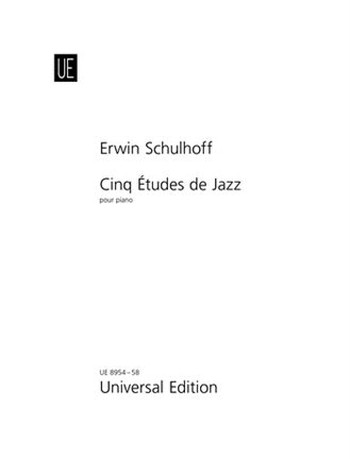
UE 8954
Schulhoff wasn’t so much an early adopter of jazz as an extraordinary visionary of how jazz might serve to move classical music forward. These two collections are resolutely modernist in their sound world but are equally thoroughly ‘jazz’: complicated but delicious harmonies colliding with cross-rhythms and swing, all wrapped up in a ferocious display of pianism.
The reason you haven’t heard of Schulhoff? His career was cut tragically short by dint of genocide during World War 2, and all the brilliant ways he might have contributed to the development of post-war compositional thinking are lost to us. What is extraordinary, looking back at these works composed in the 1920s when he was in his early 30s, is how fresh these compositions sound: it would be equally plausible to discover they’d been composed last year by some new compositional wunderkind intent on marrying popular and art music idioms.
5 Etudes de Jazz takes 5 ‘jazz’ styles (Charleston, Blues, Chanson, Tango, and a ‘Toccata sur le Shimmy ‘Kitten on the Keys’ de Zez Confrey”!) and gives them an art music treatment. By way of contrast, Hot Music (subtitled ‘Ten Syncopated Studies’) consists of short studies without titles and with no specific jazz genre/style references, but brilliantly and deeply ‘jazz’ to the bone.
These are for your very advanced students. For very, very good Grade 7 students and above.
Christopher Norton: Microjazz and Microstyles
When these books came out they redefined what was acceptable for piano teachers to teach, especially in Australia where they were quickly and broadly incorporated into the AMEB syllabus. Teachers suddenly had a resource for all those students who couldn’t care less about Clementi, and an answer/solution for parents who asked for their offspring to be taught ‘just for fun’.
One of the most refreshing aspects of these pieces was the inclusion of clear, classical-style notation, with the markings for dynamics and articulation in particular making it easy for classically-trained teachers to build brilliant jazz-sounding performances.
But more than this: Christopher Norton also provided MIDI backing tracks, and this transformed the ‘jazz’ experience of the piano student into an ensemble music-making process (even if the rest of the ensemble was electronic).
I’m writing this in the past tense, because it beggars belief you don’t ALL know and use Christopher Norton’s Microstyles and Microjazz books already!
Schoenmehl: Piano Studies in Pop
ED 7304
Only a couple of years later (1986) German composer Mike Schoenmehl came out with Piano Studies in Pop, 17 compositions exploring jazz and pop idioms. This collection is fun – longer compositions than the Microstyles and Microjazz pieces, and overtly designed to teach progressions, shapes, techniques and styles, and with an expectation that performers will have a reasonably adult hand (to play 4 note chords, for instance). Much to love in this collection, including the AMEB-listed Grade 2 piece, Melancholy Reflections.
Elissa Milne: Little Peppers and Pepperbox Jazz
And then there’s my own music. I started composing educational piano music because piano students were coming to lessons and saying “but I want to learn to play the way you do!”. I wasn’t quite sure how to teach them to do that, so instead I wrote these pieces that sound like me improvising (only they don’t go on for pages and pages).
The Little Peppers pieces are intended to introduce students to as many kinds of pianistic and compositional tricks as can fit into a 5 book collection, and at the end of each Little Peppers book is a piece called Peas in a Pod which students can rebuild in any way they like (or play it as a duet, or compose their own variations and add into the composition, and so forth). The Guided Tour of the Little Peppers gives teachers plenty of ideas for students to improvise and re-compose Little Peppers pieces, and even to jam with friends.
Pepperbox Jazz is genuine ‘really fake’ jazz! Written out jazz-idiom pieces that sound like standards. I’m possibly a late adopter because I’ve written pieces in many of the same styles as Seiber was using in 1933: tango, ragtime, blues… But these compositions reflect the shift over the 20th century into a more modal harmonic language: Wombat and Becalmed (Pepperbox Jazz 2) in Dorian mode, for instance; and the shift to more subtle ways of using rhythmic uncertainty: Mulga Bill (Pepperbox Jazz 1) in 7 time, Run Ragged (Pepperbox Jazz 1) and Wild Mushrooms (Pepperbox Jazz 2) shifting between swing and straight grooves, Tartan (Pepperbox Jazz 1) moving between 3 crotchets and 2 dotted crotchets in the bar; and the idea of compositions being built via chord substitutions: Gone Too Soon (Pepperbox Jazz 1).
Jeremy Siskind: Jazz Etude Inspirations
296860
Most recently published amongst these recommendations is this collection of tributes to various iconic jazz pianists by a young prize-winning jazz pianist from the United States, Jeremy Siskind. Besides the eight etudes (which come with practice suggestions), this book provides recommended listening lists as well as brief biographies of each jazz pianist referenced, from Count Basie and Jelly Roll Morton through to Herbie Hancock and beyond. My favourite from the collection is an energetic tribute to Chick Corea, “Hand Battle” (a perfect title for this percussive piece), but you might equally enjoy the Oscar Peterson-inspired number, Oscar’s Bounce, or any one of the other six pieces, for that matter! These pieces are suitable for Grade 4-6 students.
